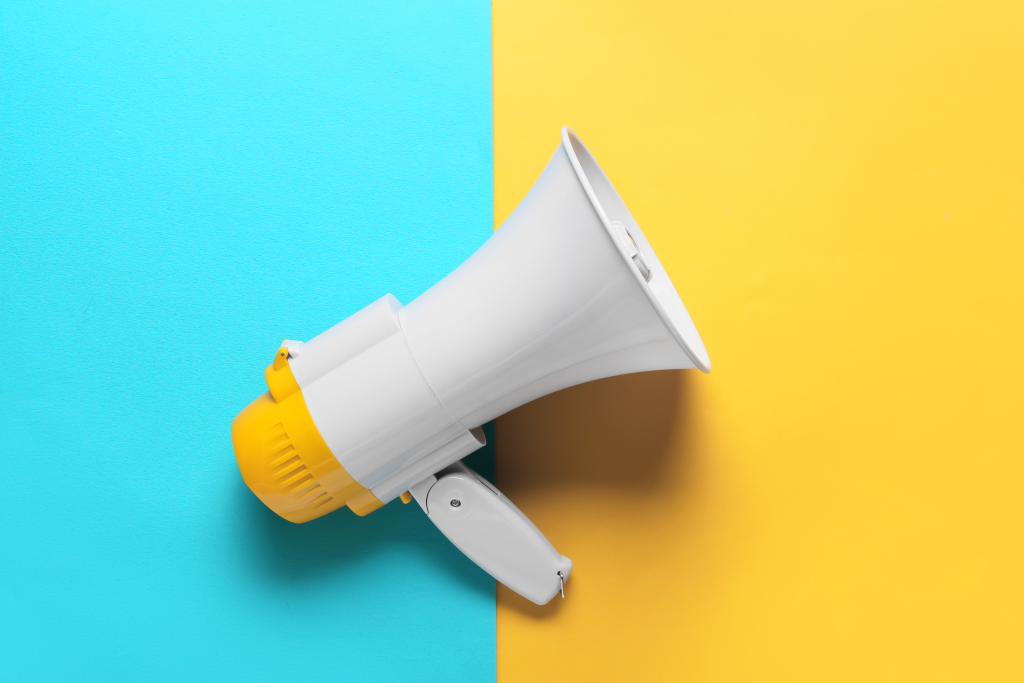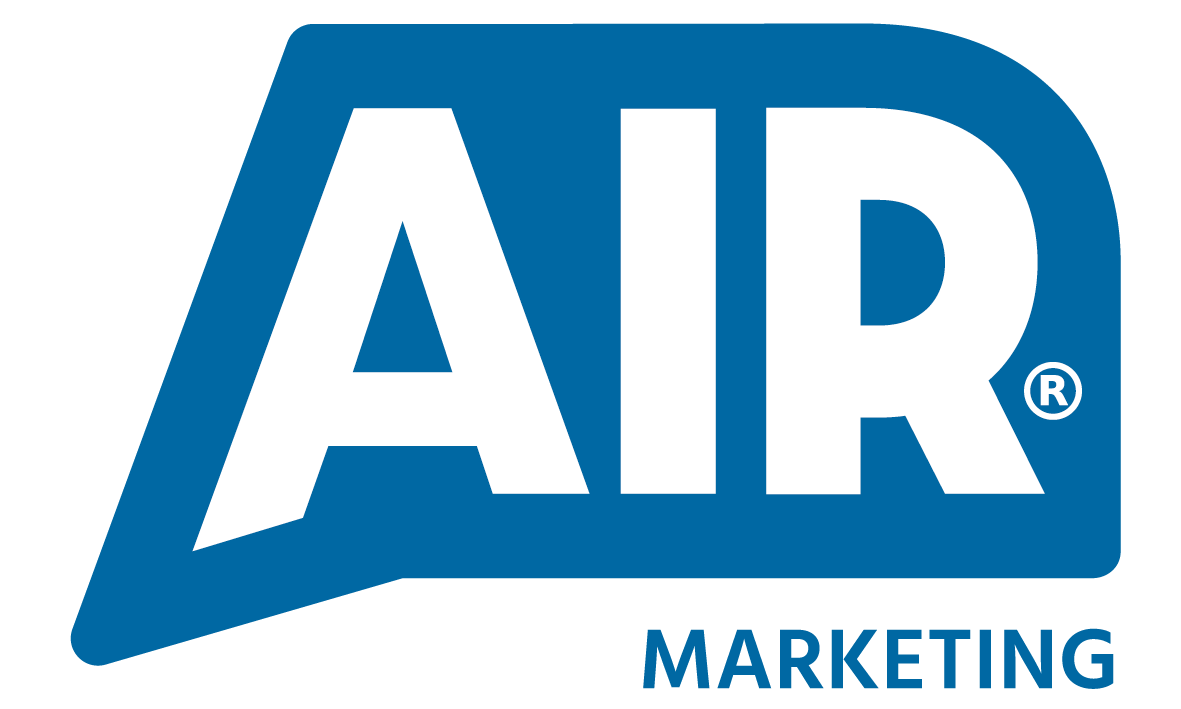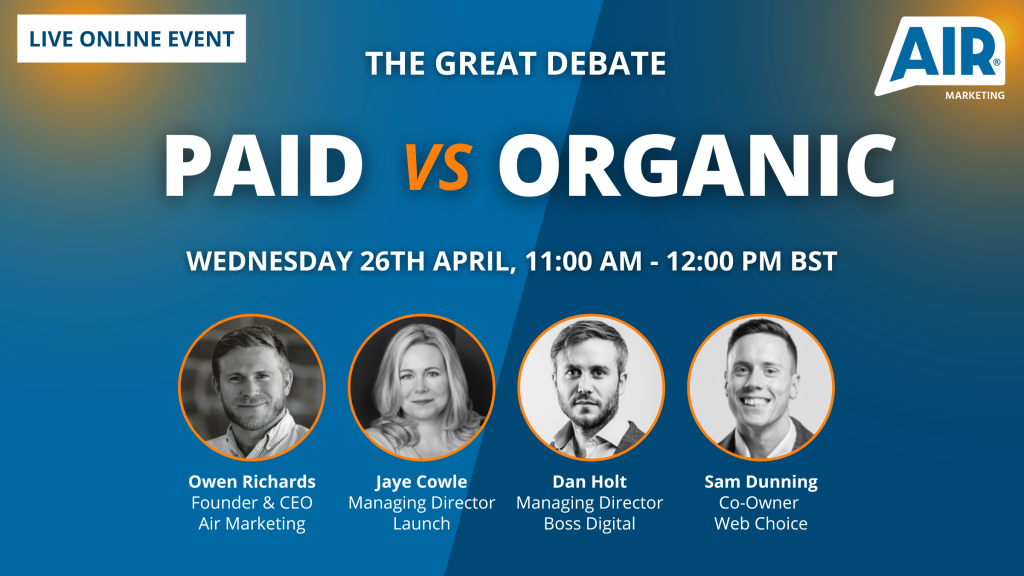When you’ve not got a lot of time, or your marketing budget is smaller than you might like, you may have to choose between the two. If this is the case, which one should you go for?
We’ve put together this short guide to help you make the right decision.
What are paid marketing and organic marketing?
Paid marketing (unsurprisingly!) is any type of digital marketing that you pay to implement. It includes advertising on search engines like Google and Bing, as well as paid social advertisements on social networks like Facebook, Instagram, and TikTok. It’s estimated that 45% of small businesses have a paid marketing strategy in place.
Organic marketing is any type of digital marketing you don’t pay to implement, although you might spend money creating it. It includes everything from blogs and case studies to email newsletters and social media posts. With organic marketing, you’re making and publishing content that doesn’t just encourage engagement but is optimised for relevant keywords, increasing the chances of ranking highly in search engines like Google.
Paid marketing and organic marketing are great for driving traffic to your website and building brand awareness. However, there are advantages and disadvantages to both.
Organic marketing: the pros
It’s low-cost
Many businesses use organic marketing for one reason: it’s low-cost and, in some cases, has no cost.
It’s free to set up social media accounts, and if you’ve already got a website, you don’t have to pay extra to start a blog. Not only this, but there are a lot of great tools, like Canva, MailChimp, and even Chat GPT, that businesses can take advantage of when it comes to organic marketing.
Still not convinced? Content marketing costs 62% less than traditional marketing and can generate three times as many leads!
It’s excellent for search engine rankings
If you want to target customers, build trust, and generate leads, it’s crucial to rank as high as possible in search engines.
After all, the number one result in Google ends up getting nearly 28% of all clicks!
SEO is a great way to give your website a boost in the rankings. By focusing on the keywords and phrases people are most likely to use, you can drive traffic, attract the right customers, and, most importantly, make a profit!
It’s long-term
Organic marketing drives permanent traffic to your website. This means you can see the benefits of your marketing efforts, even after your campaigns have ended.
One of the best ways to take advantage of long-term organic traffic is to create evergreen content. This is information that isn’t time-sensitive, meaning that prospective customers can discover it at any time.
Organic marketing: the cons
It takes time to work
Organic marketing is not a quick fix; it takes time to see the right results. As a rough estimate, it can take six to twelve months to see your optimised blog posts rank in the search engines.
Remember that the main aim of organic marketing is to build brand awareness and engage with your audience. This can take time to do, although, in our experience, the results are well worth the effort.
It can be hard to stand out from the crowd
Did you know that 7.5 million blog posts are published every single day? With so much content available online, prospective customers can be spoilt for choice!
With organic marketing, you must work extra hard to make your content stand out from your competitors and encourage your customers to engage with you.
All the content you create should be 10x content – content that is ten times better than the existing number one result in Google.
Paid marketing: the pros
It works immediately
While organic marketing takes time to work, the critical advantage of paid marketing is that it works straight away. Just set up your campaign details, enter your credit card information, and your ad will appear to thousands of people in minutes!
This makes paid marketing ideal if you need to promote something quickly. For example, let’s say you’re offering a time-sensitive product. You can use paid marketing to push your product to your target audience as soon as possible. Conversely, you might have to wait months for an organic marketing campaign to take effect.
It offers highly targeted advertising
We all know the importance of knowing your target audience. Where they live, what they do for a living… even their hobbies and interests!
One of the great things about paid marketing is the targeting options you have available. Social media platforms like Facebook, TikTok, and LinkedIn, as well as Google Ads, gather a large amount of user data. You can use this to your advantage to ensure your ads are shown to the right people and you get the right return on your advertising spend.
It offers valuable insight into your customers and competitors
Organic marketing can sometimes be hard to track. For example, if a customer checks out a blog post, an email newsletter, and a social media post before making a purchase, which piece of content do you attribute the sale to?
Conversely, paid marketing provides you with lots of valuable information you can use to power your future campaigns. You can see which ads are leading to conversions, which copy and images people prefer, and even how you’re performing compared to your competitors.
Paid marketing is also fantastic for A/B testing. Create two ads with one small difference between them and see which one performs the best.
Paid marketing: the cons
It can be expensive
The main issue with paid marketing is that it’s ‘pay to play.’ Your website might be on top of Google when you’re spending money, but as soon as you pause your campaign, you’re right back at square one.
Some industries can be incredibly competitive, and this can drive the price of advertising up. For example, if you’re in the insurance industry, you can expect to pay up to £44 per click!
The good news is that paid marketing doesn’t have to be pricey. By regularly checking your data, choosing the perfect ad types, and targeting the right customers, you can drive sales without burning through your budget.
A skilled digital marketing agency (like Air Marketing) can help structure your ad campaigns correctly.
It can be seen as untrustworthy
As people become more digitally savvy and aware of ‘misinformation’ on the internet, they’re becoming less trusting of adverts they see online. A 2021 survey by YouGov showed that only one in ten people trust social media ads. Similarly, paid ads on Google have an average click-through rate of only 1.9%.
This means that people are more likely to dismiss ads they see online, whether on Facebook, Instagram, or Google. As a result, more hard work is needed to instil confidence in prospective customers.
Alternatively… why not use both?
So far, we’ve talked about using organic marketing OR paid marketing to grow and develop your business. However, there is nothing to stop you from using both together!
35% of businesses have integrated their paid and organic strategies to get the best effect from both. Here are just some of the reasons why combining the two is often the best approach:
- Paid marketing lets you promote your brand and engage with customers quickly, while your organic marketing works behind the scenes to build a loyal audience over time
- Paid marketing allows you to precisely target customers based on their demographic, behaviour, and interests, while organic marketing can be used to build relationships with customers
- Paid marketing gives you the insight and data you need to optimise your organic marketing campaigns. For example, you can see which keywords customers are using to trigger your PPC campaigns and adopt these words and phrases for search engine optimisation purposes
- Paid marketing can be affected by your organic marketing. For example, high-quality, relevant copy on your website can increase your ‘quality score’ in Google Ads, meaning you pay less when people click on your ads
Think of both marketing channels as two halves of the same whole. For example, let’s say you operate an eCommerce website and want to encourage more people to buy your products. You can use organic marketing to boost brand awareness and inform prospective customers of your store.
When these people visit your website, you can use a retargeting campaign on social media, as well as the Google Ads display network. These ads remind them of your brand, encouraging them to return to your site and make a purchase when they’re ready.
By combining organic and paid marketing, you can expand your reach and grow your audience faster than you would with either approach on its own.
Air Marketing: experts in organic and paid marketing
At Air Marketing, we specialise in both organic marketing and paid marketing, meaning you can have the best of both worlds!
Our digital marketing experts will create a strategy that focuses on the needs of your target audience and delivers the right messages at the right time. This means you get more leads and sales, all while getting a fantastic return on investment.
Contact us today to see how you can use organic and paid marketing in perfect harmony.



